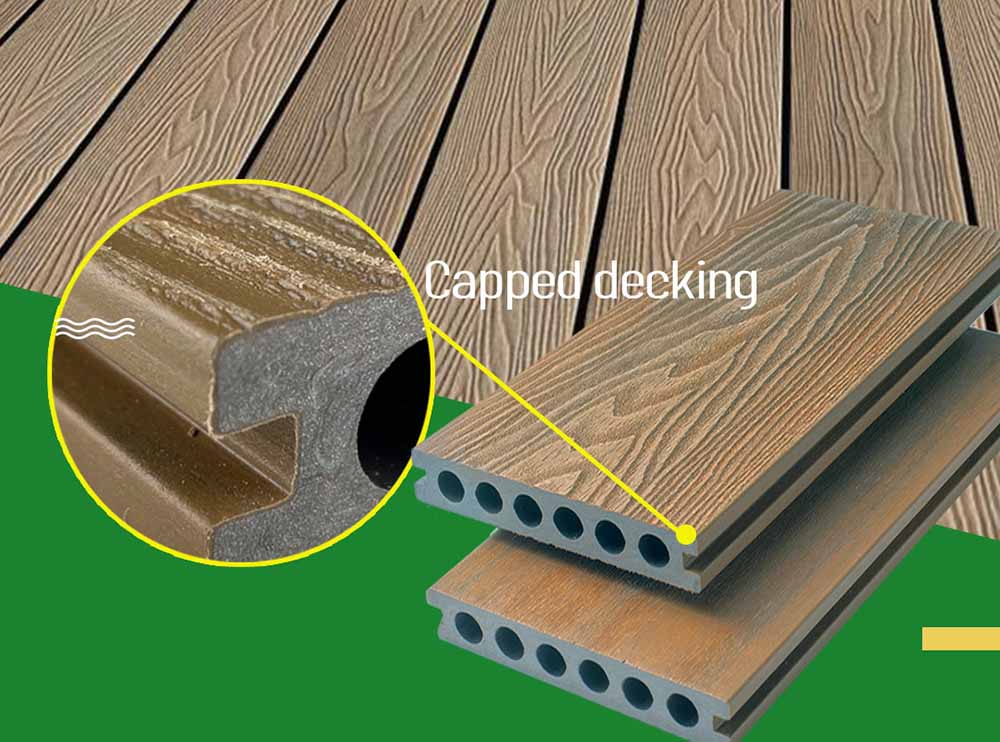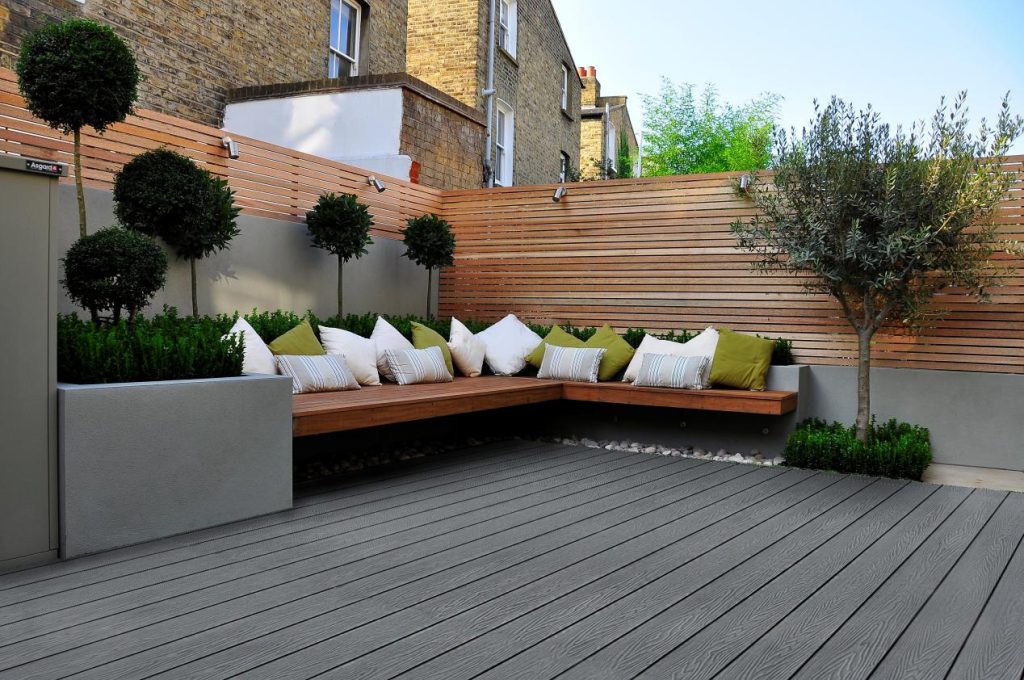
Co-Extruded Decking Products: A Shift in Market Dynamics
In recent years, a remarkable transformation has taken place in the outdoor living product industry. Co-extruded decking and other co-extruded wood plastic composite products have surged in popularity, reshaping the market landscape. Originally associated with high-end applications like doors, windows, railings, and fences, co-extruded wood plastic products ha transcended their niche to dominate even low-end segments such as decking, fences, and wall panels.
The Power of Advanced Technology
The technology behind co-extruded wood plastic composite products is a revelation in the field. Leveraging advanced extrusion molding techniques, the co-extruded layer uniformly envelops the surface, revolutionizing the decking experience. By adopting this innovation, co-extruded decking not only retains the inherent attributes of traditional WPC decking but also boasts heightened wear resistance, resilience against scratches and stains, and remarkable weather durability.
Elevating Aesthetics and Durability
This heightened durability doesn’t come at the expense of aesthetics. The co-extruded WPC product is more beautiful and durable, making it suitable for high-grade outdoor landscaping projects, architectural templates, villas, and patio flooring. It’s a transformation that combines functionality with sophistication, revolutionizing how outdoor living spaces are designed and enjoyed.
A New Generation of Wood Plastic Composites
In the international market, wood plastic composite decking is categorized as “low maintenance,” while co-extruded plastic wood and PVC crust foam decking fall under the classification of “ultra-low maintenance.” This distinction can be attributed to the exceptional surface treatment of co-extruded wood plastic composites. It exhibits superior weather resistance, heightened surface hardness, minimal susceptibility to scratches, and lower water absorption.
Conquering Long-standing Challenges
The Achilles’ heel of WPC products has long been issues like fading, mold, and surface cracks, leading to numerous complaints and returns. The co-extruded method tackles these issues at their core by encapsulating the core material. As a testament to its efficacy, North American companies have extended warranties for plastic wood flooring from 20 to 25 years, all thanks to plastic wood co-extrusion.
Materials and Innovation
The primary materials used in plastic wood co-extrusion are PVC, PE, and ASA, with PE holding a prominent position due to its voluminous nature. With domestic production relying heavily on reclaimed materials, the urgency and necessity of adopting plastic wood co-extrusion becomes evident, as not adopting this innovation could lead to market elimination.
Colors and Flexibility
The flexibility in co-extruded plastic wood is further showcased by the range of colors available—while the world’s second-largest plastic wood plant initially offered only 4 colors, co-extruded wood flooring boasts 8 colors, achievable through a simple side feeder addition to the co-extruder’s hopper. This opens the door for creative designs and personalized aesthetics.
The Art and Science of Fusion
The thinness of the co-extruded layer underscores the high precision requirements for the extrusion process. A specialized extruder is essential, necessitating accurate temperature and pressure control, along with precise output flow rate management. Achieving optimal fusion and coating between the core layer and co-extruded surface layer is paramount.
A Call for Industry Evolution
While China stands as the world’s second-largest plastic wood producer, it must acknowledge its products’ current quality lagging behind international benchmarks. The reliance on reclaimed materials contributes to this quality disparity. However, the potential of co-extruded plastic wood offers a transformative opportunity.
Embrace the Transformation
Co-extruded plastic wood isn’t merely another product—it’s a transformative leap forward, heralding a reshuffle within the plastic wood industry. This paradigm shift deserves the keen attention of plastic wood manufacturers, as it not only enhances individual offerings but also propels the industry towards a dynamic and prosperous future. Embrace the change, and be part of the journey toward decking excellence.









